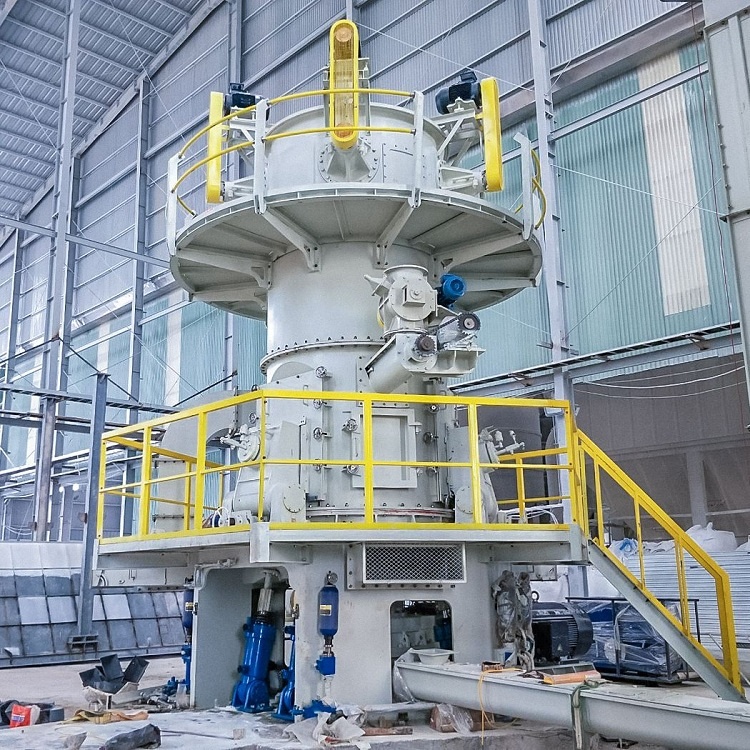Talc is a magnesium-rich silicate mineral. Crystals are in the shape of pseudohexagonal rhombic plate or columnar (rare), common flake, scaly and dense block, glass gloss, pearl gloss on cleavage surface, and its hardness is 1-1.5. Black talc is a general term for black and gray-black talc. Organic matter is the main cause of blackening. Black talc can not be widely used because of its low whiteness, but it can be used in ceramics, rubber and other industries.
In order to expand the application field of black talc, appropriate measures must be taken to improve the whiteness of black talc. Calcination is an effective method. Calcined talc can obtain high-quality, high-white and ultra-fine powder after ultra-fine grinding, which is widely used in coatings, plastics, rubber, high-grade ceramics and other industries. The raw ore is loose and massive with grey and black spots and water content of 12.5%. It is still difficult to disperse after 24 hours immersion in water, and the dry powder has a slippery feeling.
At present, the use of black talcum powder mainly list in the following.
Ceramic industry raw materials: Black talc can be fired to produce high white porcelain and bone china, which cannot be replaced by other materials.
Rubber product filler: The black talcum powder has good dispersing properties and has certain reinforcing properties, and is an ideal filler for rubber products.
Black talcum powder is a common plastic filler, and calcined talc powder can be obtained by calcining black talc powder.
In addition to being widely used in the above industries, black talc can also be used as a filler and adsorbent for industries such as waterproof raw materials, fertilizers, pesticides and fine chemicals.
The natural whiteness of black talcum powder is usually 50% or even lower. In order to make black talcum powder better applied, the main purpose is to improve whiteness. The current processing technology of black talcum powder is “burn first and then grind”. The organic carbon in the black talc is removed by calcination to increase the whiteness, and then the talc grinding mill is used for grinding to produce “black talcum powder” having the same particle size, whiteness and purity.

The talc grinding mill is mainly composed of a main machine, a classifier, a blower, an electromagnetic vibrating feeder, a storage hopper, a pipeline system, an electric control cabinet, etc., wherein the classifier adopts a forced turbine classification technology, which has a larger processing capacity and a higher classification efficiency. High; the damping bushing is made of special rubber and wear-resistant material, which not only effectively isolates the vibration generated by the operation of the equipment, but also changes the short life and frequent maintenance of the rubber sleeve structure used by the traditional mill. To ensure the continuity of production.
HOT PRODUCTS

Talc Raymond Mill
Capacity: 1-25 t/h
Max feeding size: 40 mm
Discharge fineness: 50-325 mesh
Range of application: Barite, calcite, potassium feldspar, talc…… [Read More…]

Micro Powder Grinding Mill
Capacity: 0.2-45 t/h
Max feeding size: 20 mm
Discharge fineness: 150-3000 mesh
Range of application: calcium carbonate, kaolin, carbon black, dolomite…… [Read More…]

Talc Ultrafine Grinding Mill
Capacity: 0.2-45 t/h
Max feeding size: 20 mm
Discharge fineness: 150-3000 mesh
Processing materials: non-flammable and explosive non-metallic ores with Mohs hardness less than 7…… [Read More…]

Talc Jaw Crusher
Output Size: 65-160mm
Feed size: 480mm
Capacity: 1-140t/h
Processing materials: Granite, quartz stone, river pebble, calcite, concrete, dolomite…… [Read More…]

Talc Hammer Mill
Output Size: 5-20 mm
Feed size: <350 mm
Capacity: 5-30 t/h
Application: It is widely used for medium and fine crushing of brittle, medium hardness and soft materials... [Read More…]

Talc Vertical Mill
Discharge fineness: 150-3000 mesh
Feed size: <15 mm
Output: 1-20 T/H
Product features: It has high grinding efficiency, low energy consumption, uniform particle shape... [Read More…]


